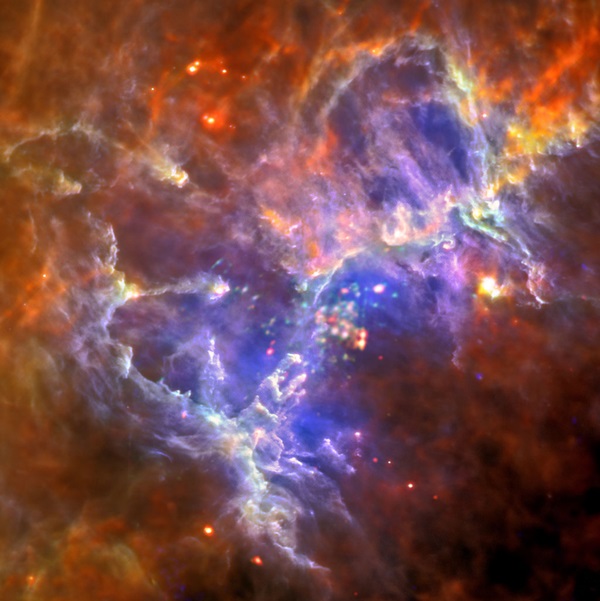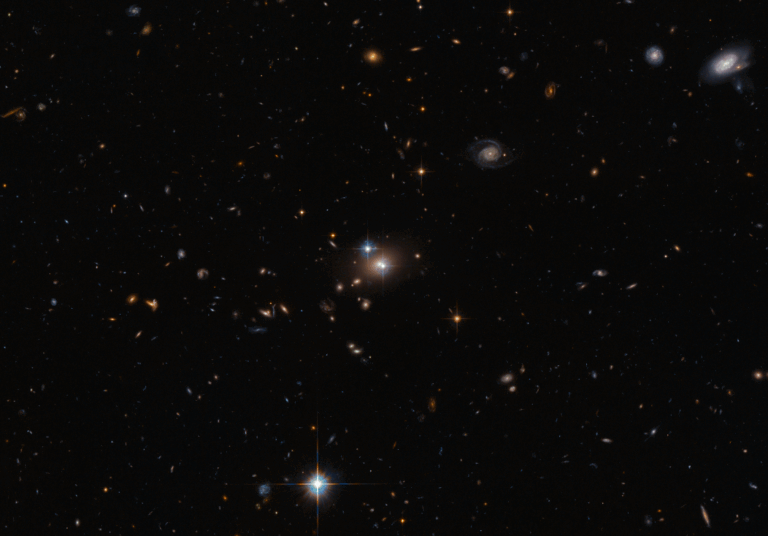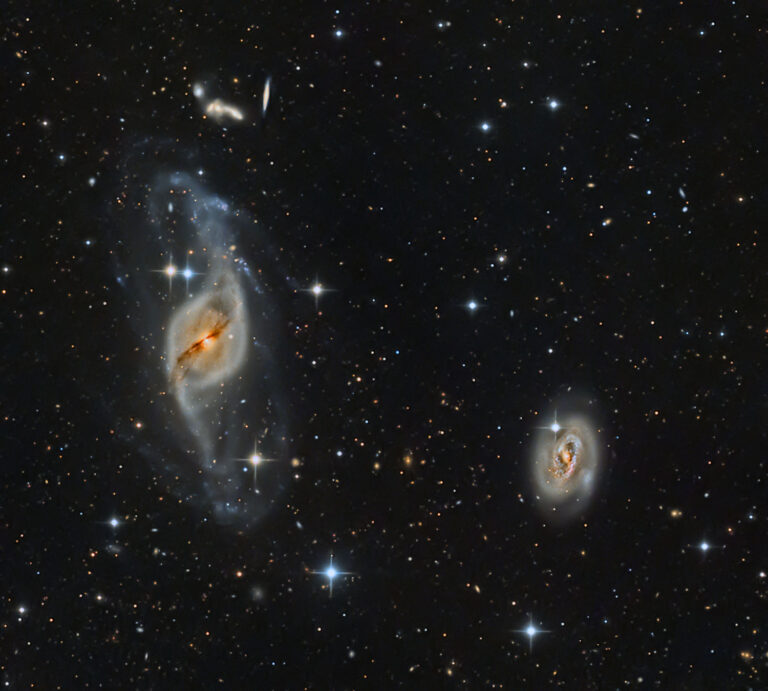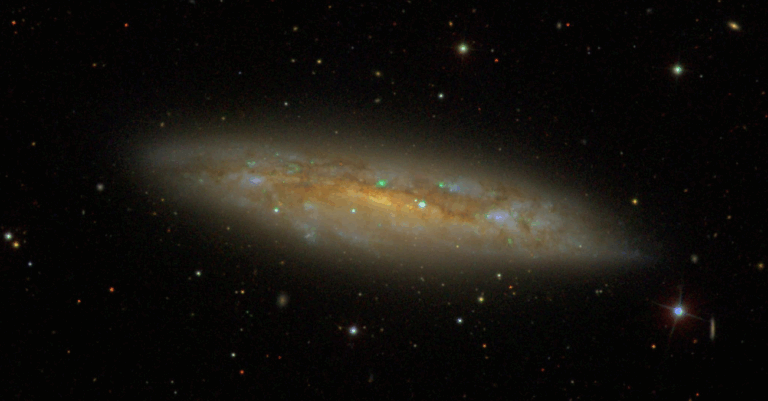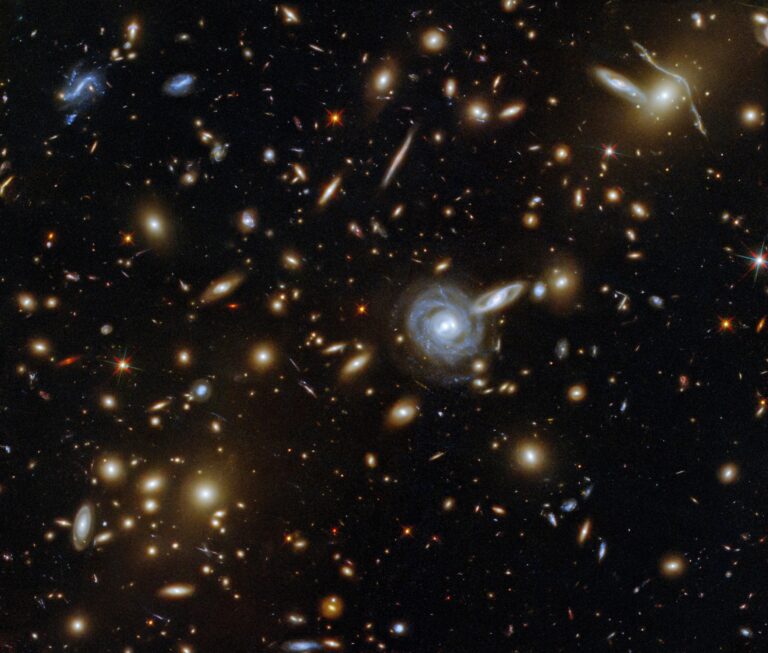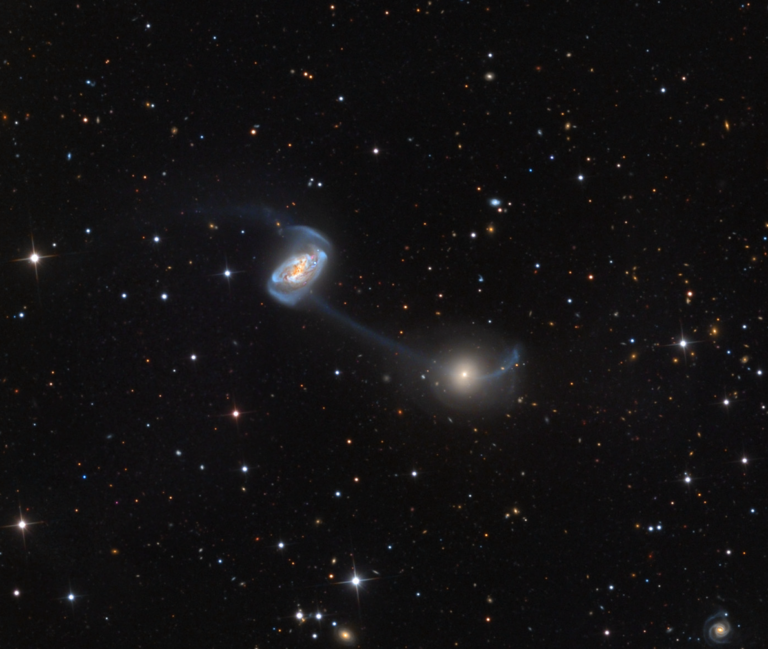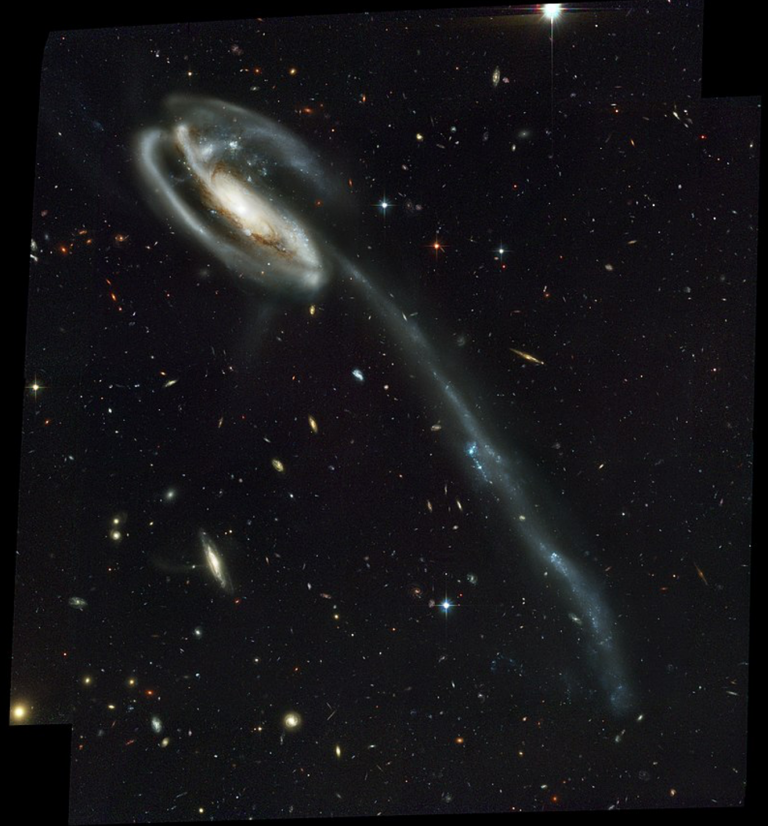Key Takeaways:
The Hubble image of the “Pillars of Creation” hinted at new stars being born within the pillars, inside small clumps known as “evaporating gaseous globules” (EGGs). Due to obscuring dust, Hubble’s visible light picture was unable to see inside and prove that young stars were indeed forming.
The European Space Agency’s (ESA) new image from the Herschel Space Observatory shows the pillars and the wide field of gas and dust around them. Captured in far-infrared wavelengths, the image allows astronomers to see inside the pillars and structures in the region.
In parallel, a new multi-energy X-ray image from ESA’s XMM-Newton telescope shows those hot young stars responsible for carving the pillars.
Combining the new space data with near-infrared images from the European Southern Observatory’s (ESO’s) Very Large Telescope (VLT) at Paranal, Chile, and visible-light data from its Max Planck Gesellschaft 2.2-meter-diameter telescope at La Silla, Chile, we see this iconic region of the sky in a uniquely beautiful and revealing way.
In visible wavelengths, the nebula shines mainly due to reflected starlight and hot gas filling the giant cavity, covering the surfaces of the pillars and other dusty structures.
At near-infrared wavelengths, the dust becomes almost transparent and the pillars practically vanish. In far-infrared, Herschel detects this cold dust and the pillars reappear, this time glowing in their own light.
Intricate tendrils of dust and gas are seen to shine, giving astronomers clues about how they interact with strong ultraviolet light from the hot stars seen by XMM-Newton.
In 2001, the VLT’s near-infrared images had shown only a small minority of the EGGs were likely to contain stars being born. However, Herschel’s image makes it possible to search for young stars over a much wider region and, thus, come to a much fuller understanding of the creative and destructive forces inside the Eagle Nebula.
Earlier mid-infrared images from ESA’s Infrared Space Observatory and NASA’s Spitzer, and the new XMM-Newton data, have led astronomers to suspect that one of the massive, hot stars in NGC 6611 may have exploded in a supernova 6,000 years ago, emitting a shock wave that destroyed the pillars.
However, because of the distance of the Eagle Nebula, we won’t see this happen for several hundred years yet.
Powerful ground-based telescopes continue to provide astonishing views of our universe, but images in far-infrared, mid-infrared, and X-ray wavelengths are impossible to obtain because of the absorbing effects of Earth’s atmosphere.
Space-based observatories such as ESA’s Herschel and XMM-Newton help peel back that veil and see the full beauty of the universe across the electromagnetic spectrum.
With regions like the Eagle Nebula, combining all of these observations helps astronomers to understand the complex yet amazing lifecycle of stars.

